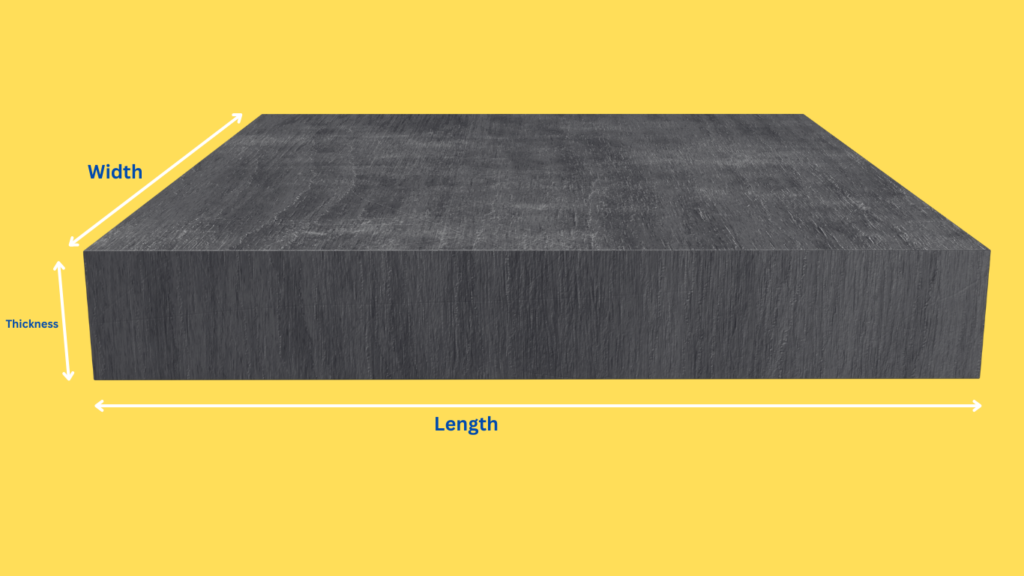How To Calculate Concrete Quantity in Cubic Meter
Table of Contents
How To Calculate Concrete Quantity in Cubic Meter
Calculating the quantity of concrete required for a construction project is essential for budgeting and planning purposes. To calculate the concrete quantity in cubic meters (m³), you need to know the dimensions and proportions of the concrete elements you are planning to build, such as a slab, column, or footing. Here’s a step-by-step guide to help you calculate the concrete quantity:
How To Calculate Concrete Quantity in Cubic Meter, here are the steps.
Step 1: Determine the Volume of the Concrete Element

Example: Calculating the concrete quantity for a rectangular slab.
- Measure the Dimensions:
- Length (L) = 5 meters
- Width (W) = 3 meters
- Depth (D) = 0.15 meters (assuming the thickness of the slab)
- Calculate Volume:
- Volume = Length × Width × Depth
- Volume = 5 m × 3 m × 0.15 m = 2.25 m³
Step 2: Account for Wastage and Shrinkage
Concrete calculations usually account for wastage and shrinkage. The standard wastage allowance is around 5-10% of the total concrete quantity. Let’s assume a wastage factor of 10%.
- Wastage = 10% of 2.25 m³ = 0.225 m³
Step 3: Calculate the Total Concrete Quantity
Total Concrete Quantity = Volume of the Concrete Element + Wastage
Total Concrete Quantity = 2.25 m³ + 0.225 m³ = 2.475 m³
So, you will need 2.475 cubic meters of concrete to construct the given slab considering a 10% wastage allowance.
Additional Tips:
- Round Up: When ordering concrete, it’s a good practice to round up the quantity to the nearest cubic meter to ensure you have a little extra in case of unexpected needs.
- Consult a Supplier: Concrete suppliers often provide a calculator on their websites to help you estimate the quantity of concrete required based on your project specifications.
- Professional Assistance: For complex or large-scale projects, it’s advisable to consult with a structural engineer or construction professional who can provide precise calculations based on the specific requirements of your project.
Remember, the method for calculating concrete quantity might vary based on the shape and complexity of the concrete element. Always double-check your calculations and consult with professionals if you are unsure.
FAQ: How To Calculate Concrete Quantity in Cubic Meter
Q: Why is it important to calculate concrete quantity in cubic meters?
A: Calculating concrete quantity in cubic meters is crucial for accurate construction planning and budgeting. It ensures that you order the right amount of materials, avoiding waste and unnecessary expenses.
Q: What information do I need to calculate concrete quantity?
A: You’ll need the dimensions of the concrete structure – length, width, and depth (or thickness). These measurements should be in meters for consistency.
Q: How do I calculate the volume of a rectangular slab?
A: Multiply the length, width, and depth (or thickness) of the slab in meters. The formula is Volume = Length × Width × Depth.
Q: Are there specific units for depth in cubic meter calculations?
A: Yes, the depth should be in meters to maintain consistency with the other dimensions.
Q: What if the dimensions are in feet or inches?
A: Convert all dimensions to meters before applying the formula. For example, 1 foot equals approximately 0.3048 meters.
Q: Is there a different formula for calculating the volume of a cylindrical structure?
A: Yes, for a cylindrical shape, the formula is [Volume = π × Radius² × Height]. Ensure all measurements are in meters.
Q: How can I convert the volume to concrete quantity?
A: Multiply the volume by the concrete mix’s yield, typically given in cubic meters per ton. This conversion factor accounts for the density of the concrete mix.
Q: What is the concrete mix yield?
A: Concrete mix yield represents the volume of concrete produced from one ton of mix. It varies based on the mix design and can be obtained from the supplier.
Q: Can I use ready-mix concrete for these calculations?
A: Yes, ready-mix concrete can be used. Ensure you know the mix design and obtain the mix yield from the supplier for accurate calculations.
Q: How do I calculate quantities for irregular shapes?
A: For irregular shapes, divide the structure into simpler shapes (rectangles, circles), calculate their volumes, and then sum them up.
Q: What is the importance of including wastage in calculations?
A: Wastage is common in concrete projects due to spillage, over-excavation, etc. Including a percentage for wastage ensures you order enough concrete to account for these losses.
Q: Can weather conditions affect concrete quantity calculations?
A: Yes, extreme weather conditions may impact the workability of concrete, affecting the quantity needed. Consult with experts or adjust calculations based on weather considerations.
Q: Should I round up the calculated quantity?
A: It’s advisable to round up to the nearest cubic meter to ensure you have a slight surplus, accounting for unforeseen factors during construction.
Q: How often should I recalculate concrete quantity during a project?
A: Recalculate whenever there are changes in the project scope, design alterations, or if there are delays that may affect the concrete’s setting time.
Q: Can software or apps help in concrete quantity calculations?
A: Yes, there are various construction calculators and software available that can simplify the process and reduce the risk of errors in calculations.









2 thoughts on “How To Calculate Concrete Quantity in Cubic Meter”